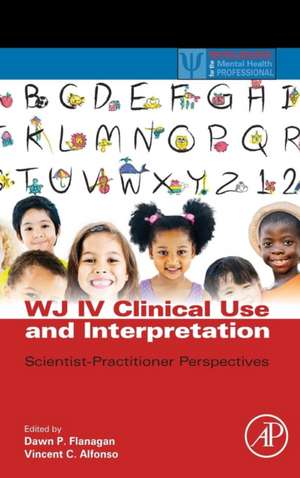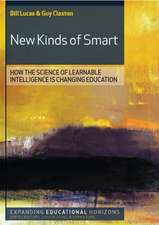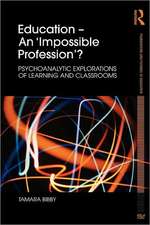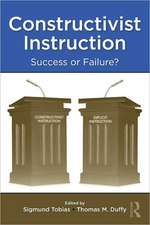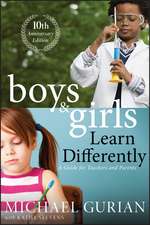WJ IV Clinical Use and Interpretation: Scientist-Practitioner Perspectives
Editat de Dawn P. Flanagan, Vincent C Alfonsoen Limba Engleză Hardback – 21 ian 2016
Coverage includes the predictive validity of its lower order factors and the clinical information that can be derived from its 60 individual subtests. Part II of this book describes the clinical and diagnostic utility of the WJ IV with young children for diagnosing learning disabilities in both school age and adult populations, and for identifying gifted and talented individuals.
Additionally, the book discusses the use of the WJ IV with individuals whose culture and language backgrounds differ from those who are native English speakers and who were born and raised in mainstream US culture.
- Discusses the organization and content of all three batteries in the WJ-IV
- Reviews best practices for score interpretation
- Covers psychometric properties and predictive validity
- Explores clinical information that can be extracted from 60 individual subtests
- Includes diagnostic utility for learning disabilities, giftedness, and non-English speaking populations
Preț: 338.82 lei
Preț vechi: 392.45 lei
-14% Nou
Puncte Express: 508
Preț estimativ în valută:
64.83€ • 67.87$ • 53.65£
64.83€ • 67.87$ • 53.65£
Carte tipărită la comandă
Livrare economică 29 martie-12 aprilie
Preluare comenzi: 021 569.72.76
Specificații
ISBN-13: 9780128020760
ISBN-10: 0128020768
Pagini: 434
Dimensiuni: 152 x 229 x 25 mm
Greutate: 0.86 kg
Editura: ELSEVIER SCIENCE
ISBN-10: 0128020768
Pagini: 434
Dimensiuni: 152 x 229 x 25 mm
Greutate: 0.86 kg
Editura: ELSEVIER SCIENCE
Cuprins
1. Overview of the Woodcock-Johnson IV: Organization, Content, and Psychometric Properties
Yi Ding and Vincent C. Alfonso
2. Clinical Interpretation of the Woodcock–Johnson IV Tests of Cognitive Abilities, Academic Achievement, and Oral Language
Ron Dumont, John O. Willis and Robert Walrath
3. A Special Validity Study of the WJ IV: Acting on Evidence for Specific Abilities
Christopher R. Niileksela, Matthew R. Reynolds, Timothy Z. Keith and Kevin S. McGrew
4. WJ IV Scoring and Reporting Online Program Review
Scott L. Decker, Emma Kate C. Wright and Tayllor E. Vetter
5. Instructional Implications from the Woodcock–Johnson IV Tests of Cognitive Abilities
Denise E. Maricle and Wendi L. Johnson
6. Instructional Implications from the Woodcock–Johnson IV Tests of Achievement
Nancy Mather and Barbara J. Wendling
7. Strengths and Weaknesses of the Woodcock–Johnson IV Tests of Cognitive Abilities: Best Practice from a Scientist–Practitioner Perspective
W. Joel Schneider
8. Use of the WJ IV in the Identification of Specific Learning Disabilities in School-age Children
Erin M. McDonough and Dawn P. Flanagan
9. Use of the Woodcock–Johnson IV in the Diagnosis of Specific Learning Disabilities in Adulthood
Benjamin J. Lovett and Laura M. Spenceley
10. Use of the Woodcock–Johnson IV Tests of Cognitive Abilities in the Diagnosis of Intellectual Disability
Randy G. Floyd, Isaac L. Woods, Leah J. Singh and Haley K. Hawkins
11. Use of the Woodcock–Johnson IV Tests of Cognitive Abilities and Achievement in the Assessment for Giftedness
Steven I. Pfeiffer and Jordy B. Yarnell
12. Assessment of Culturally and Linguistically Diverse Individuals with the Woodcock–Johnson IV
Samuel O. Ortiz, Juan A. Ortiz and Rosemary I. Devine
13. Neurocognitive Applications of the WJ IV
Daniel C. Miller, Ryan J. McGill and Wendi L. Bauman Johnson
14. Use of the Woodcock–Johnson IV in a Response to Intervention Service Delivery Model
Karen E. Apgar and Justin L. Potts
Yi Ding and Vincent C. Alfonso
2. Clinical Interpretation of the Woodcock–Johnson IV Tests of Cognitive Abilities, Academic Achievement, and Oral Language
Ron Dumont, John O. Willis and Robert Walrath
3. A Special Validity Study of the WJ IV: Acting on Evidence for Specific Abilities
Christopher R. Niileksela, Matthew R. Reynolds, Timothy Z. Keith and Kevin S. McGrew
4. WJ IV Scoring and Reporting Online Program Review
Scott L. Decker, Emma Kate C. Wright and Tayllor E. Vetter
5. Instructional Implications from the Woodcock–Johnson IV Tests of Cognitive Abilities
Denise E. Maricle and Wendi L. Johnson
6. Instructional Implications from the Woodcock–Johnson IV Tests of Achievement
Nancy Mather and Barbara J. Wendling
7. Strengths and Weaknesses of the Woodcock–Johnson IV Tests of Cognitive Abilities: Best Practice from a Scientist–Practitioner Perspective
W. Joel Schneider
8. Use of the WJ IV in the Identification of Specific Learning Disabilities in School-age Children
Erin M. McDonough and Dawn P. Flanagan
9. Use of the Woodcock–Johnson IV in the Diagnosis of Specific Learning Disabilities in Adulthood
Benjamin J. Lovett and Laura M. Spenceley
10. Use of the Woodcock–Johnson IV Tests of Cognitive Abilities in the Diagnosis of Intellectual Disability
Randy G. Floyd, Isaac L. Woods, Leah J. Singh and Haley K. Hawkins
11. Use of the Woodcock–Johnson IV Tests of Cognitive Abilities and Achievement in the Assessment for Giftedness
Steven I. Pfeiffer and Jordy B. Yarnell
12. Assessment of Culturally and Linguistically Diverse Individuals with the Woodcock–Johnson IV
Samuel O. Ortiz, Juan A. Ortiz and Rosemary I. Devine
13. Neurocognitive Applications of the WJ IV
Daniel C. Miller, Ryan J. McGill and Wendi L. Bauman Johnson
14. Use of the Woodcock–Johnson IV in a Response to Intervention Service Delivery Model
Karen E. Apgar and Justin L. Potts
